Ralph Baer invented video games in 1967 — here’s the dramatic tale of a refugee who reimagined home entertainment
"Father of the Video Game" Ralph Baer escaped Jewish persecution in Nazi Germany as a teen and served in the U.S. Army in WWII. After coming of age in tough times, he felt driven to bring "more fun and whimsy" into the world.
Ralph Baer's childhood was stolen by the Nazis.
The German-born Jew gained a semblance of revenge overseas, imagining a new way for children of all ages to play.
Ralph Baer invented video games.
A natural tinkerer as a child, he reclaimed his youth after arriving in the United States, where he was freed to unleash his creative energy and technical genius in the Land of Opportunity.
MEET THE AMERICAN WHO SNAPPED THE FIRST SELFIE, ROBERT CORNELIUS, PHILADELPHIA VANITY PHOTO FUTURIST
"Moving to America was magic to my dad," son Mark Baer, director of the Ralph H. Baer Trust and based in Salt Lake City, told Fox News Digital.
"He was appreciative of this country for the rest of his life."

Ralph Baer in his workshop in Manchester, New Hampshire. Best known as the "Father of the Video Game," Baer created over 100 other inventions. (Courtesy Ralph H. Baer Trust)
Baer joined the U.S. Army in World War II, shipped off to Europe and helped defeat Hitler's National Socialists just five years after he fled persecution.
"Moving to America was magic to my dad." — Mark Baer
He completed the world’s first video game console, dubbed "The Brown Box," in 1967, while working for Sanders Associates in Manchester, New Hampshire.
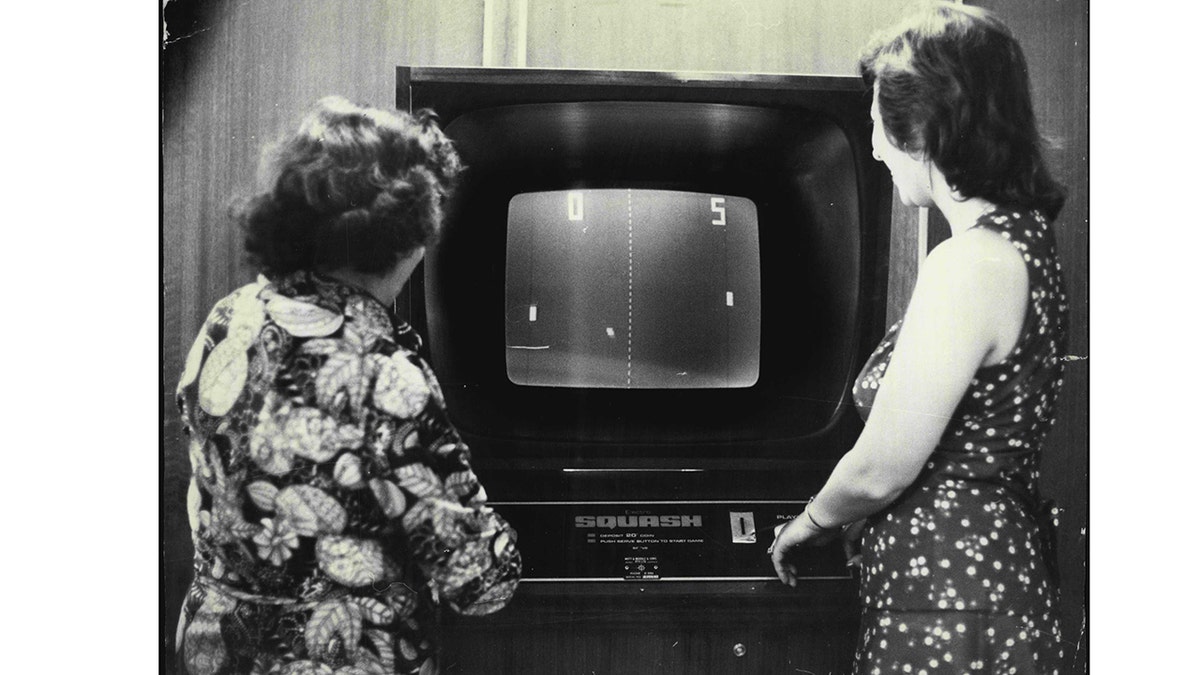
A game of Electro Squash being played by Una Goggins of Lidcombe and Brenda Fenwick of Bronte at the Trade Union Club Surry Hills in the U.K. on the Magnavox Odyssey, 1975. (Barry James Gilmour/Fairfax Media via Getty Images)
"My father escaped Nazi Germany as a child, and he spent much of his life after that thinking differently about the world and trying to introduce more fun and whimsy into it," Mark Baer said in an interview with the Strong Museum of Play.
"He was a visionary and creative force who never stopped learning, inventing, and tinkering — even into his 90s."
‘Inspired by loneliness’
Rudolf Heinrich Baer was born on March 8, 1922, in Pirmasens, Germany, near the border of France, to Leo and Lotte (Kirschbuam) Baer, and later raised in Cologne, an ancient Roman city on the Rhine River.
Germany was a broken society crippled by hyperinflation following its defeat in World War I.
"This economic disaster had social consequences as well," reports the United States Holocaust Memorial Museum. "Many Germans who considered themselves middle class found themselves destitute."
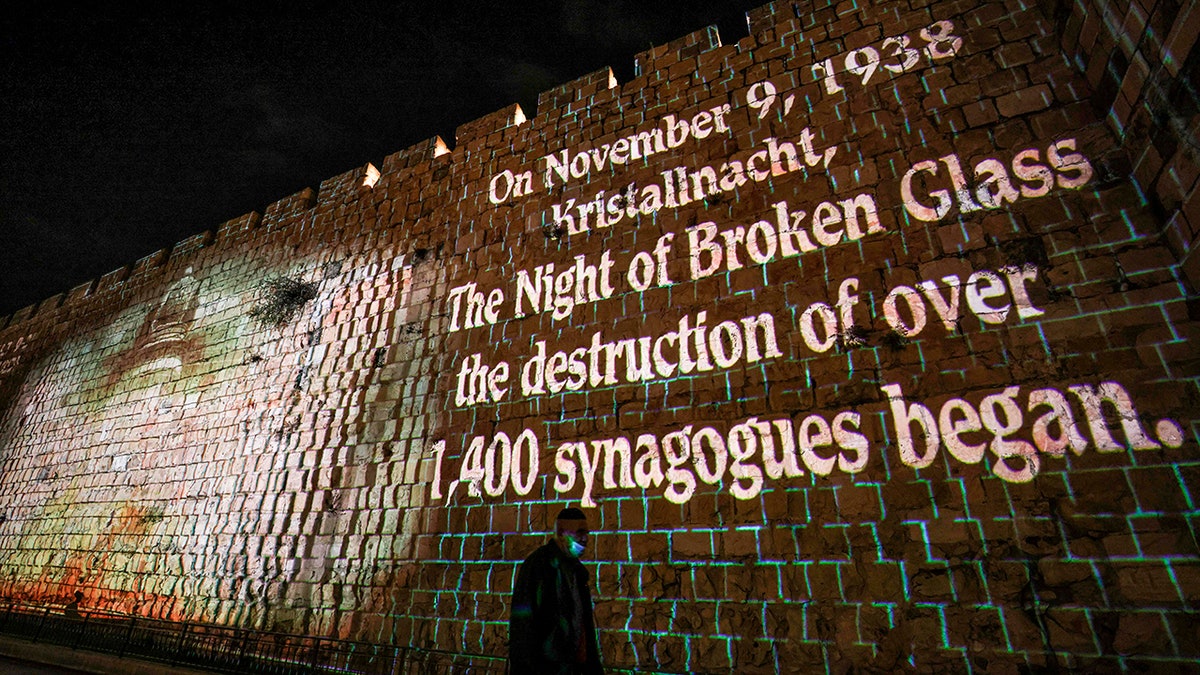
This picture taken on Nov. 9, 2020, shows the walls of the old city of Jerusalem lit with messages of hope and images of synagogues, mosques, churches from around the world, during an event commemorating the 82nd anniversary of the Kristallnacht (Night of Broken Glass) in Germany. (MENAHEM KAHANA/AFP via Getty Images)
A hard life grew desperate for the Jewish family after Adolf Hitler ascended to authority in Germany in 1933.
Dad Leo was forced out of his tannery business despite being a wounded veteran of the German army who fought in World War I, said Mark Baer — and the family was restricted from attending its synagogue.
MEET THE AMERICAN WHO INVENTED THE TV REMOTE CONTROL: SELF-TAUGHT CHICAGO ENGINEER EUGENE POLLEY
"Ralph was a super-creative child with a million friends," Baer biographer Marcie Wessels of San Diego, author of "The Boy Who Thought Outside the Box," told Fox News Digital.
His social life quickly unraveled, she said, citing Baer's private personal memoir. The boy was kicked out of school. His best friend joined the Hitler Youth.
Other friends disowned him; and he was bullied as anti-Jewish animosity infected Germany.

"The Boy Who Thought Outside the Box" by Marcie Wessels tells young readers the dramatic story of Ralph Baer, a German Jew who fled Nazi persecution and invented video games after being freed to pursue his talents in the United States. (Illustration by Beatriz Castro/courtesy Union Square Publishing)
"He turned inward on his inventions when his social relationships fell apart," said Wessels. "I think he was inspired by his loneliness. Later in life he saw video games as a way to bring people together."
The Baers leveraged family connections in the U.S. to flee Germany in 1938.
They arrived in New York City just two months before the infamous Kristallnacht of Nov. 9, 1938 — "Night of the Broken Glass."
"I think he was inspired by his loneliness. Later in life he saw video games as a way to bring people together." — Marcie Wessels, author
"Nazi troops throughout Germany smashed windows of stores and homes owned by Jews and set fire to synagogues, injuring — and even killing — German citizens of Jewish descent," reports the Smithsonian Institution in its Baer biography.
"These state-sponsored, anti-Jewish riots are considered to be the start of the Holocaust."
The Baers escaped Germany only weeks before it might have been too late to do so.

Ralph Baer arrived in the U.S. in 1938 at age 16. He served in the famed military intelligence unit "The Ritchie Boys" in the U.S. Army in World War II. (Courtesy Ralph H. Baer Trust)
Baer renewed his schooling in the U.S., studying radio technology before joining the U.S. Army when America entered World War II.
"He wasn't even a citizen yet," said Mark Baer.
WWII-ERA MILITARY SLEEP METHOD COULD HELP INSOMNIACS NOD OFF QUICKLY, SOME CLAIM: ‘PEACH AND CALM’
The future innovator became one of the legendary "Ritchie Boys" — an elite intelligence unit trained at Camp Ritchie in Maryland that included thousands of German-speaking Jewish refugees.
"These soldiers were often highly motivated to return to Europe to defeat Nazism," reports the United States Holocaust Memorial Museum.
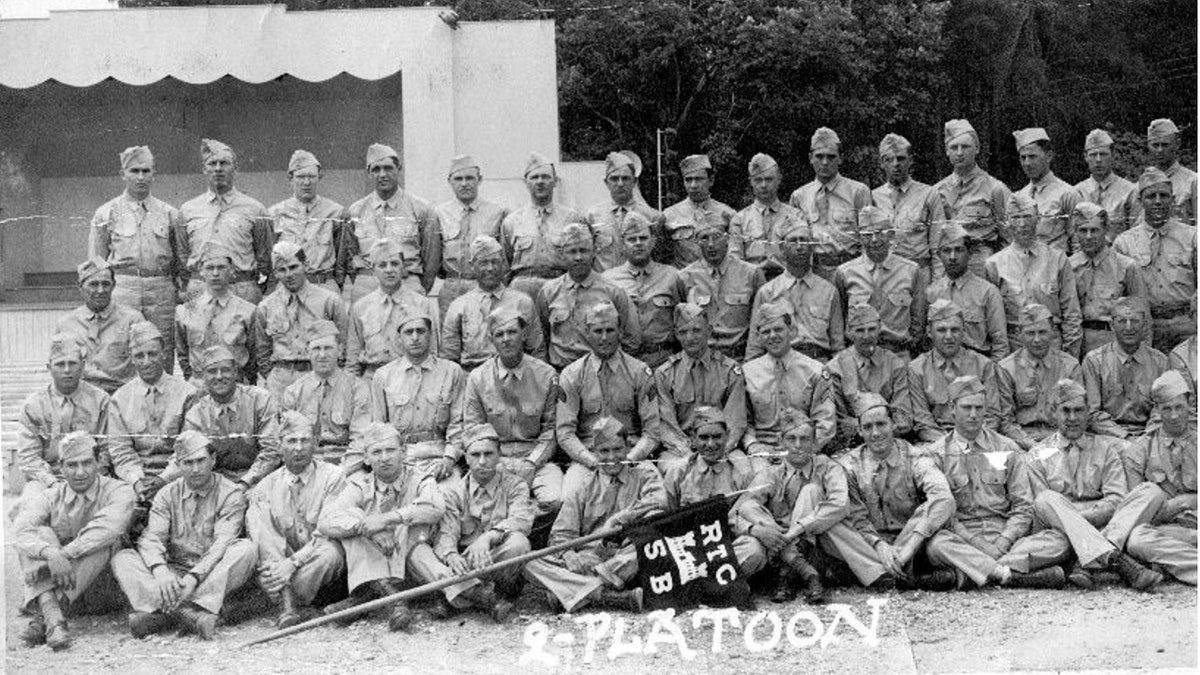
Video game inventor Ralph Baer, a German Jew who fled Nazi Germany, served in the U.S. Army in World War II. A note from Baer that accompanied this photo indicates he's seated second row from bottom, second from left. (Courtesy Ralph H. Baer Trust)
The Ritchie Boys, by some accounts, were responsible for up to 60% of all the intelligence gathered by the U.S. military in Europe during World War II.
Ralph Baer fought back against Nazism with intellect that group rejected because of his faith.
‘The Brown Box’
Baer restarted his education for the third time in life after the war, with the benefit this time of the G.l. Bill.
He earned a degree from the American Television Institute of Technology in Chicago in 1949.
"As a new graduate in 1951, he had proposed to the television company that employed him that they should build games into their brand of television sets to differentiate them from those of their competitors," reports the Smithsonian Institution.
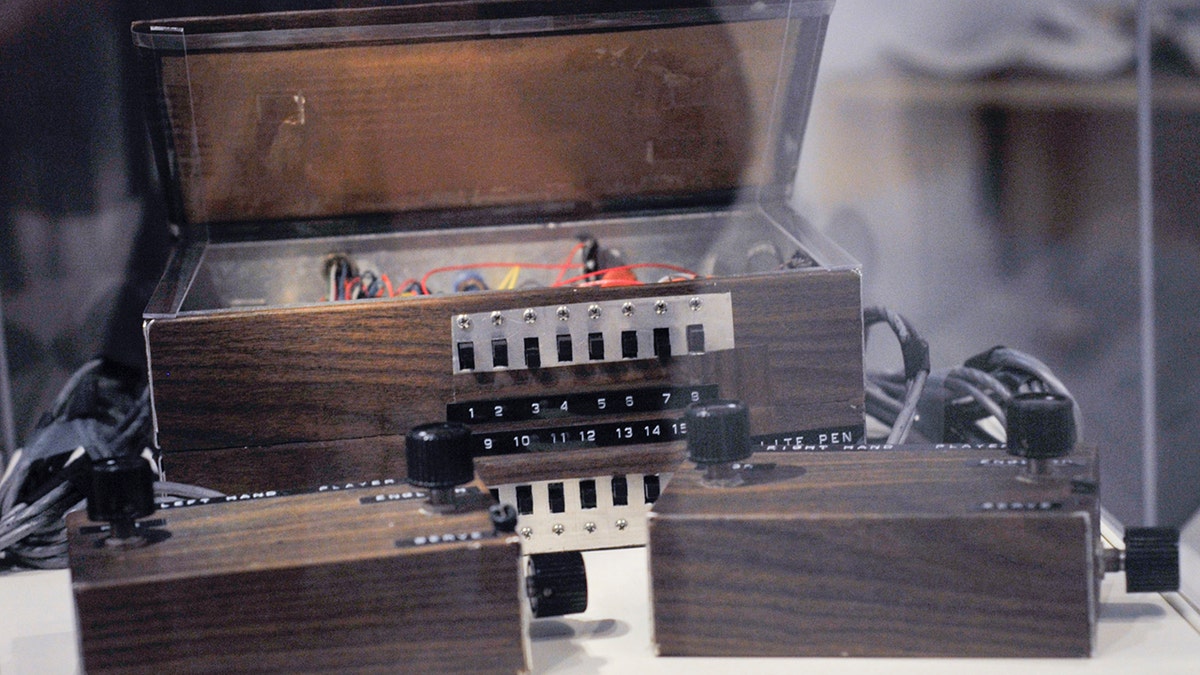
"The Brown Box," invented by Ralph Baer, is on display during the grand opening of National Museum Of American History's Innovation Wing at the National Museum of American History on July 1, 2015, in Washington, D.C. (Kris Connor/ Getty Images)
The idea was quickly rejected.
Baer was two decades ahead of his time.
He went to work in 1955 for military contactor Sander Associates in Manchester, New Hampshire, where he lived most of his life.
He pursued his own innovations in his home workshop at nights and on weekends, many of them games. Television had reached almost every American home by 1966. Baer took another look at the idea of turning the tube into a platform for play.
"The minute we played ping-pong, we knew we had a product." — Ralph Baer
He approached his employer with the idea, understanding toys would be a tough sell for the military contractor.
"So the first thing I don’t do is call it a toy," Baer said in an interview with the National Museum of American History. "But I can call it gaming."
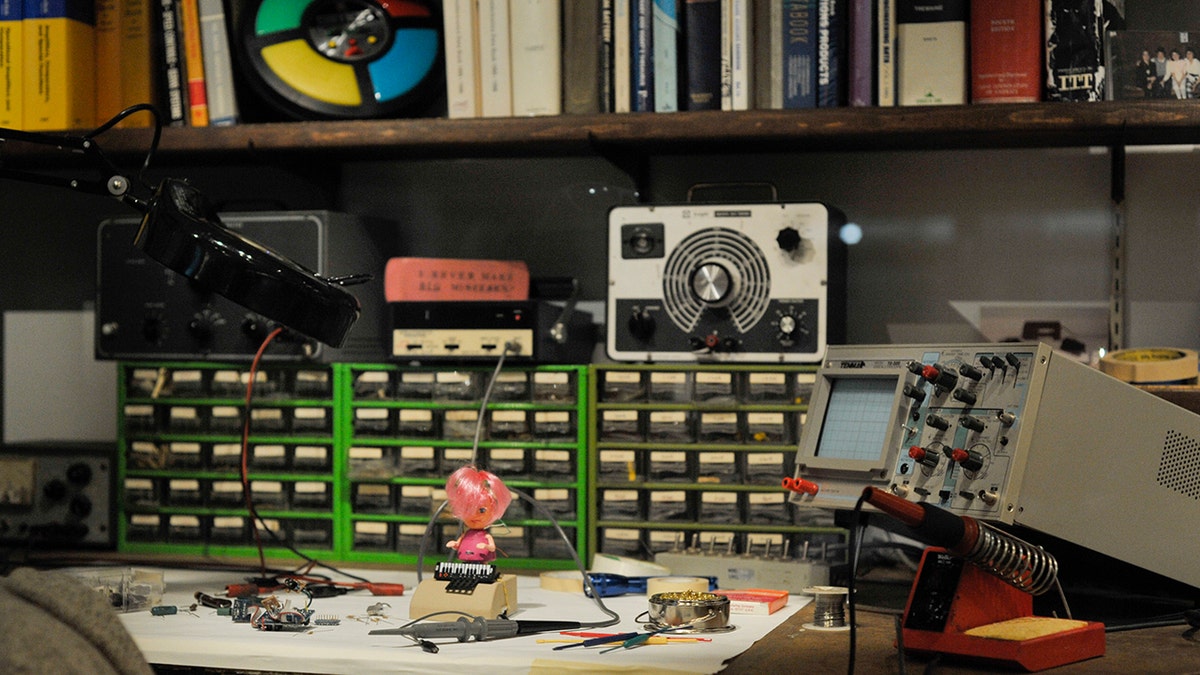
Ralph Baer's workshop on display during the opening of the Innovation Wing at the National Museum of American History on July 1, 2015, D.C. (Kris Connor/ Getty Images)
The term "gaming," the museum notes, was used in the military. It's now entrenched in video game and wider popular culture.
Sanders Associates bit and agreed to support his research. He produced a working interactive console in 1967, dubbed "The Brown Box" because of its clunky design.
It was the world's first video game. It contained features still recognizable today: two controls and a console that gave users multiple options, including ping-pong, checkers and several different sport games.
MEET THE AMERICAN WHO WROTE THE MOON-LANDING SOFTWARE: MARGARET HAMILTON, COMPUTER WHIZ AND MOM
"The minute we played ping-pong, we knew we had a product," said Baer.
Baer's "Brown Box" technology was licensed to Magnavox and released in 1972 as Magnavox Odyssey, the world's first home video-game system.

Ralph Baer at age 84, shown at his New Hampshire home, saw the future of video games while working as an engineer for a defense contractor in the 1960s. (Suzanne Kreiter/The Boston Globe via Getty Images)
Sales were modest. But Baer's vision proved the standard for video games to come. Proof of its potential came in the form of efforts to duplicate his technology.
Entrepreneurs Nolan Bushnell and Ted Dabney launched Atari in 1972, introducing the first arcade video game, Pong.
"So the first thing I don’t do is call it a toy. But I can call it gaming." — Ralph Baer
They launched a home version of the ping-pong game in 1975. Magnavox sued, claiming Atari had violated its patents — Baer's original patents.
"Ralph Baer had carefully documented his work," reports the National Museum of American History.
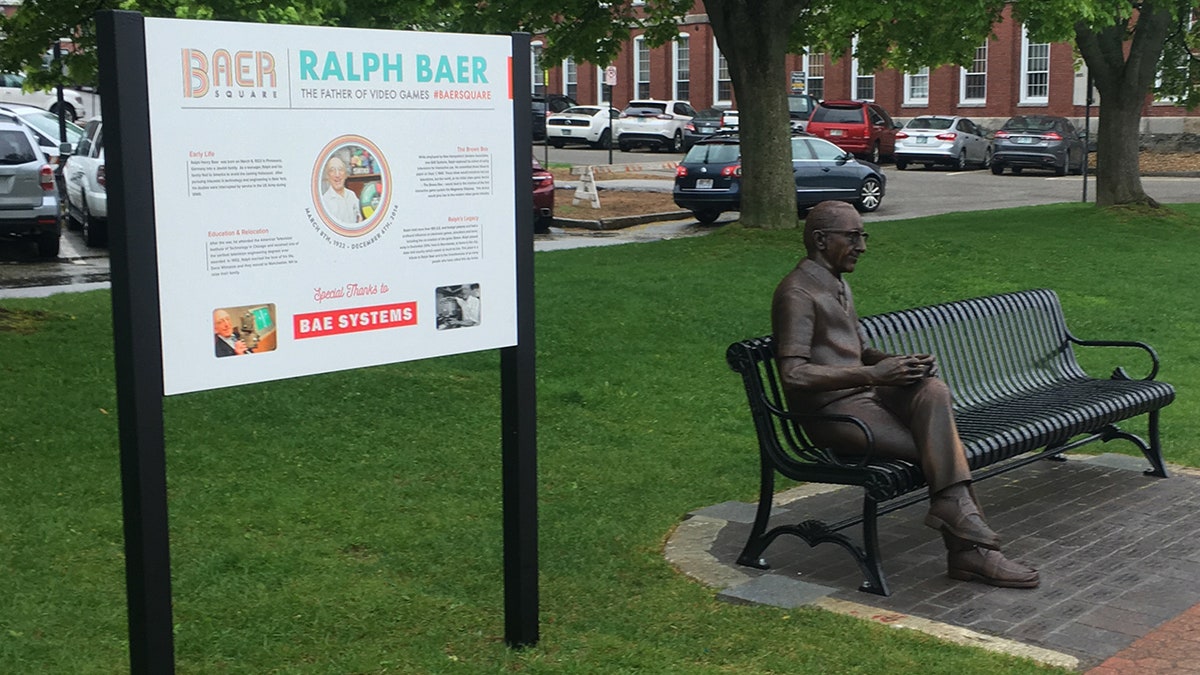
A memorial was dedicated in 2019 to Ralph Baer in Manchester, New Hampshire, where the inventor lived most of his life. (Courtesy Ralph H. Baer Trust)
"Magnavox could prove that they demonstrated Odyssey to the public in 1972 and that Bushnell had attended the demonstration … Rather than face a lengthy and undoubtedly unsuccessful court case, Atari settled with Magnavox."
With Baer's intellectual property secured, he is known today as the "Father of Video Games."
Legacy of resilience
Ralph Baer died at his home in Manchester on Dec. 6, 2014, at age 92. He's buried at Manchester Hebrew Cemetery.
His inventive life produced more than 150 patents, scores of them for electronic and interactive games and toys.
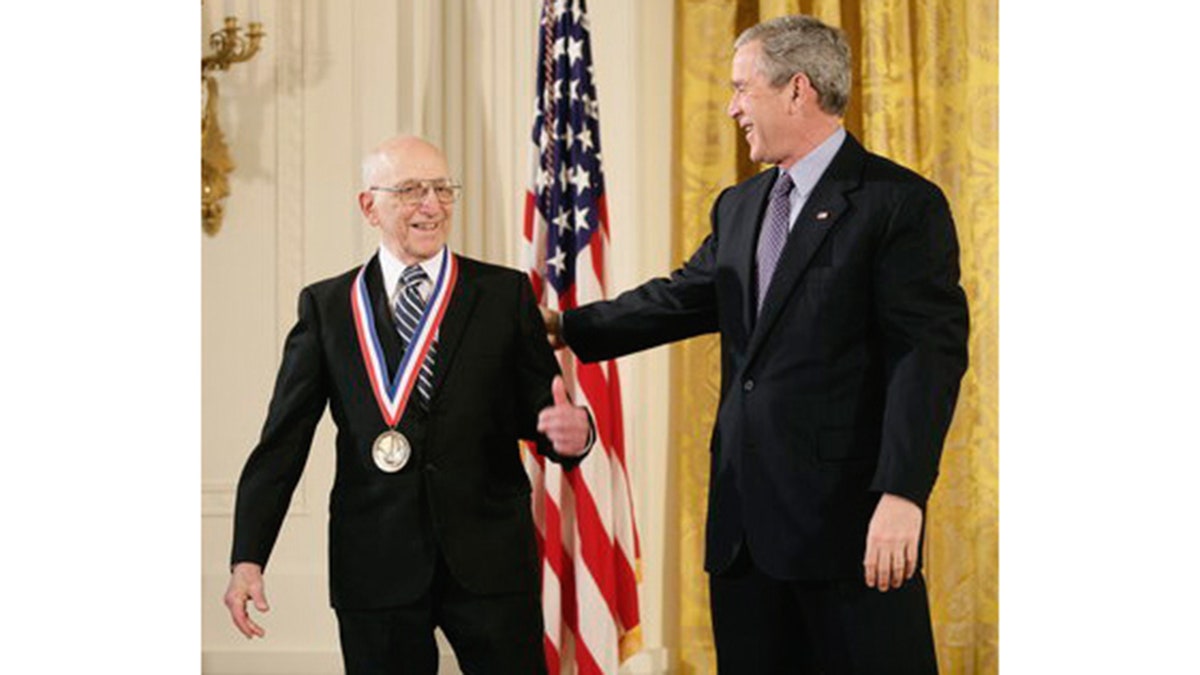
Ralph H. Baer of New Hampshire was honored by President George W. Bush with the National Medal of Technology and Innovation for his groundbreaking work in developing commercial video games, Feb. 13, 2006. (Ryan K Morris/Public Domain)
One of his inventions, the colorful memory game Simon, was released amid great fanfare at the famed New York City disco hotspot Studio 54 and became a commercial sensation through the early 1980s.
President George W. Bush awarded Baer the prestigious National Medal of Technology and Innovation in a White House ceremony in 2006.
In a more intimate posthumous hometown ceremony, the Ralph Baer Memorial Bench was dedicated in Manchester in 2019, with Baer's children Mark, James and Nancy in attendance.
It features a bronze statue of the bespectacled inventor smiling with a video game remote control in his hands.
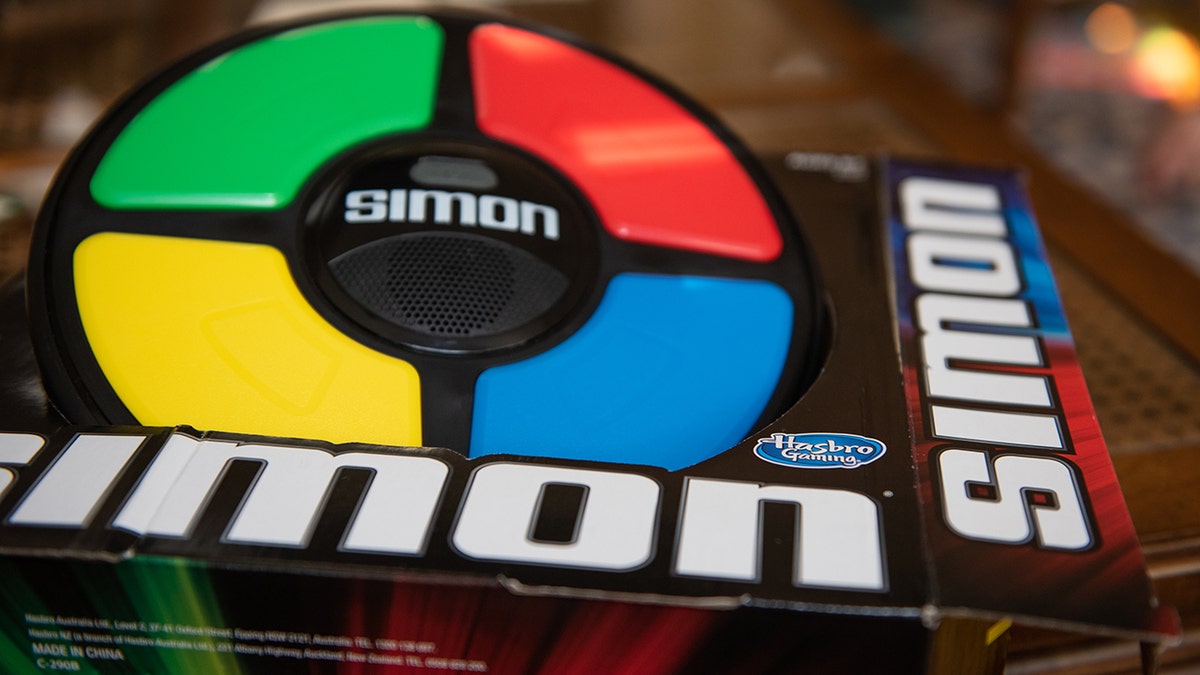
Hasbro Inc. Gaming brand Simon electronic game is arranged for a photograph in Atlanta, Georgia, on Saturday, July 20, 2019. (Tiffany Hagler-Geard/Bloomberg via Getty Images)
Baer donated his life's work to the Smithsonian National Museum of American History in 2006.
His workshop was put on display in the museum's Innovation Wing in 2014.
The global video game market he inspired was valued in 2022 at $217 billion; about 82% of the global population plays video games, according to various industry estimates.
"His greatest legacy is resilience. He learned from his childhood that he could make something essentially from nothing." — Mark Baer
The video gaming industry took directions Baer probably never imagined.
"He'd be excited to see the incredible ways the technology has evolved," said Wessels, the Baer biographer.
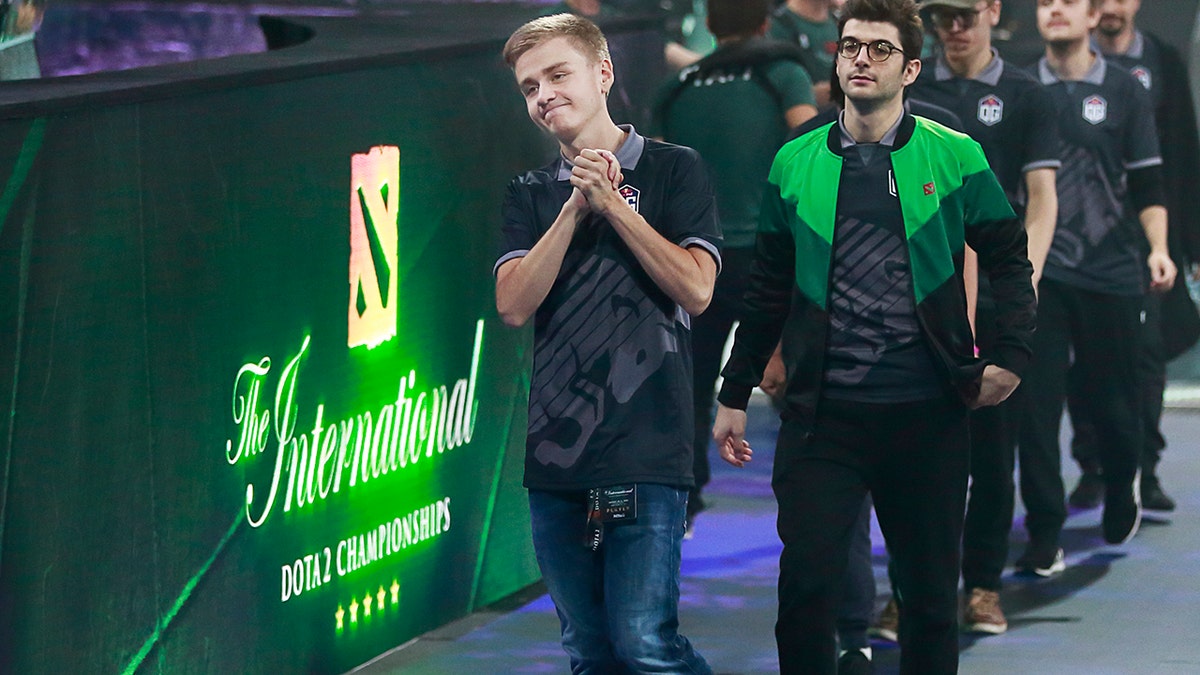
Johan Sundstein of Denmark leads OG onto the stage before their final match against PSG.LGD on Day 6 of The International 2018 at Rogers Arena on Aug. 25, 2018, in Vancouver, Canada. The winning team netted more than $10 million. (Jeff Vinnick/Getty Images)
"He was opposed, though, to [the] violence that's emerged in video games. And he didn't love the idea of someone sitting alone in the dark. He always saw video games as a way to bring people together."
CLICK HERE TO SIGN UP FOR OUR LIFESTYLE NEWSLETTER
Countless opportunities have emerged for entrepreneurs and programmers.
Major universities today offer scholarships to top gamers. The best players have made a career of what Baer first dubbed gaming in the 1960s.

The Grand Theft Auto franchise has sold more than 400 million video game copies; Ralph Baer invented the first video game in 1967. (Photo Illustration by Rafael Henrique/SOPA Images/LightRocket and photo by Suzanne Kreiter/The Boston Globe, both via Getty Images)
Johan Sundstein of Denmark reportedly has earned a record $7.4 million as a professional video-game competitor.
"Dad had the creative genius to look at the world and emerging technology in a new way, and the technical ability to execute his vision," said Mark Baer.
CLICK HERE TO GET THE FOX NEWS APP
"His greatest legacy is resilience. He learned from his childhood that he could make something essentially from nothing."
The Nazis stole Baer’s childhood.
But they never robbed him of a childlike fascination with the world.
To read more stories in this unique "Meet the American Who…" series from Fox News Digital, click here.
For more Lifestyle articles, visit www.foxnews.com/lifestyle.

